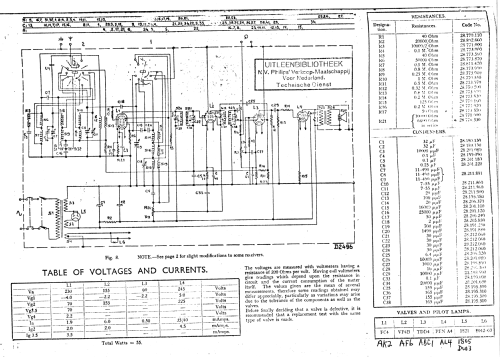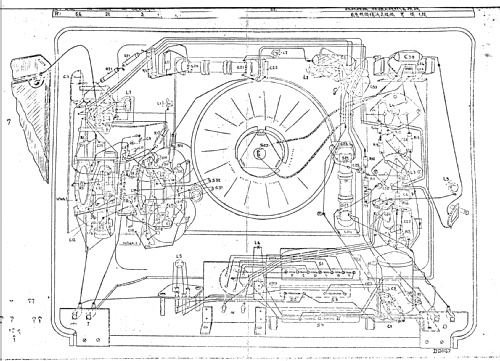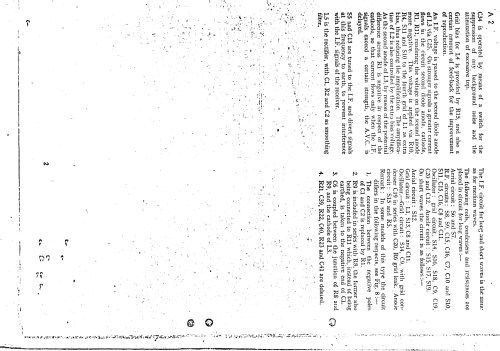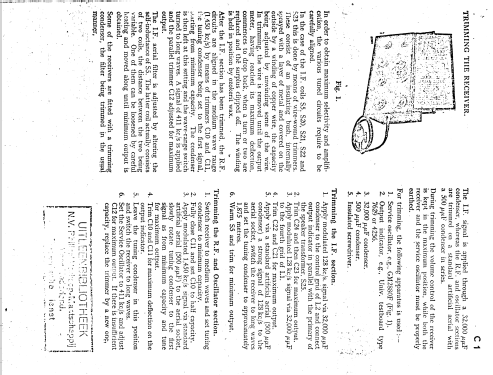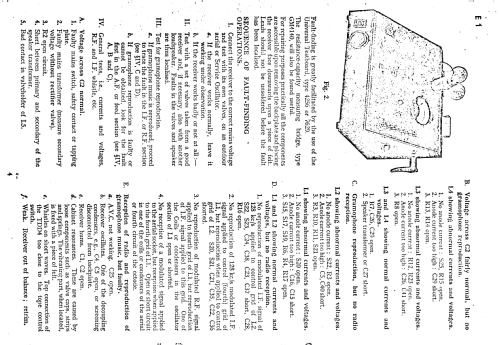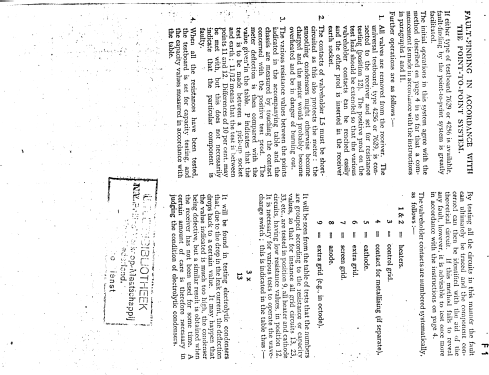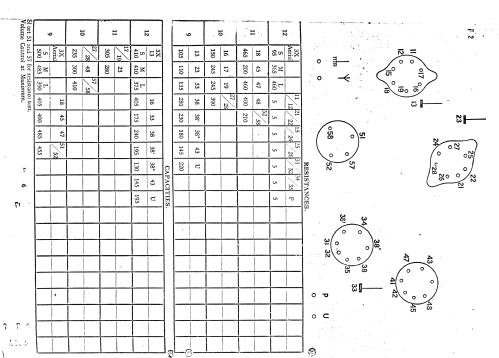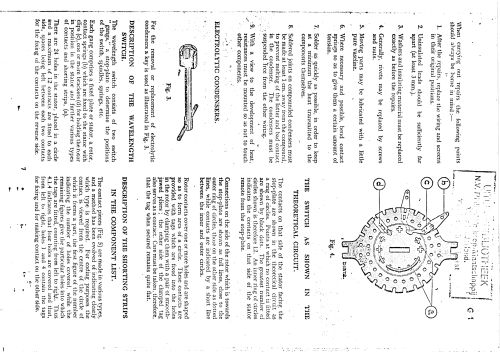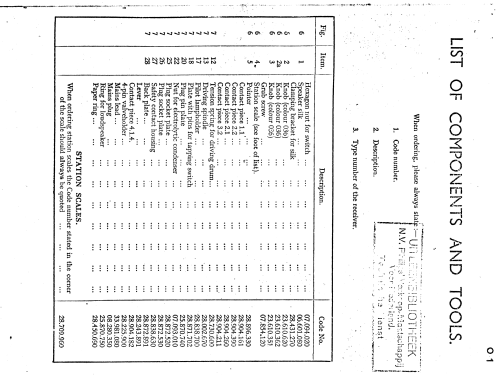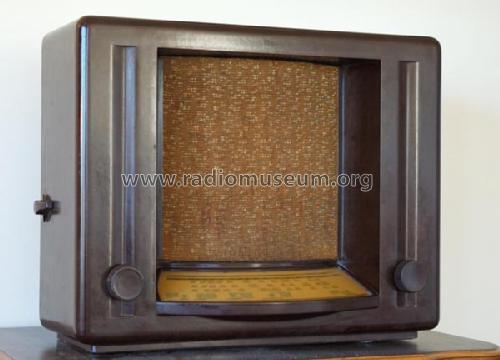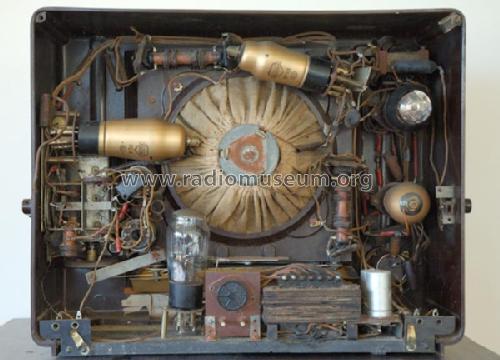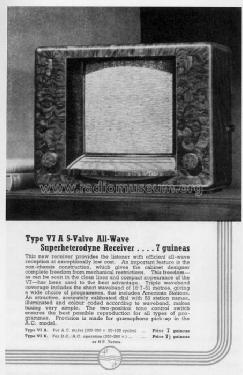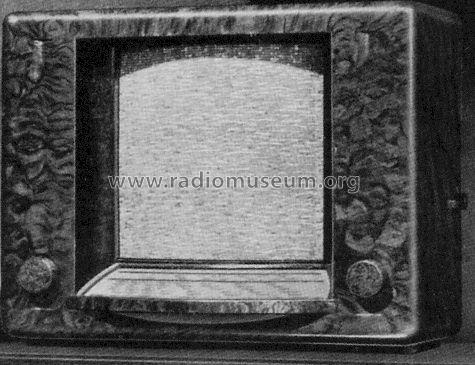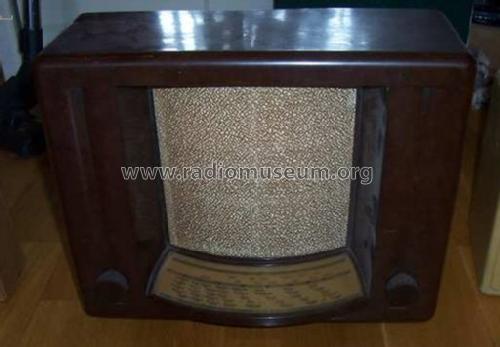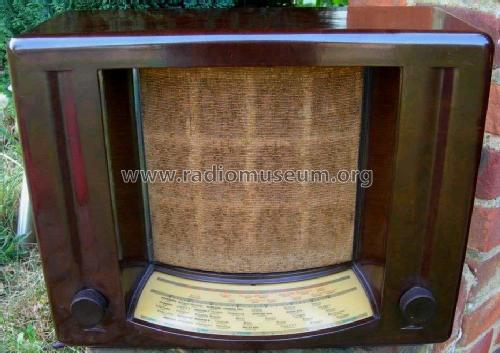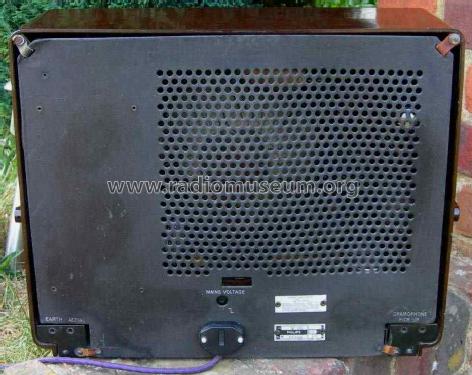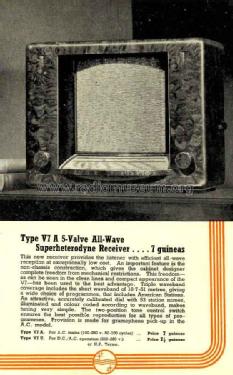Theatrette V7A
Philips Electrical, Lamps, Industrial - Miniwatt; London
- Land
- Grossbritannien (UK)
- Hersteller / Marke
- Philips Electrical, Lamps, Industrial - Miniwatt; London
- Jahr
- 1936–1938

- Kategorie
- Rundfunkempfänger (Radio - oder Tuner nach WW2)
- Radiomuseum.org ID
- 90942
Klicken Sie auf den Schaltplanausschnitt, um diesen kostenlos als Dokument anzufordern.
- Anzahl Röhren
- 5
- Hauptprinzip
- Superhet allgemein; ZF/IF 128 kHz; 2 NF-Stufe(n)
- Anzahl Kreise
- 6 Kreis(e) AM
- Wellenbereiche
- Langwelle, Mittelwelle und Kurzwelle.
- Betriebsart / Volt
- Wechselstromspeisung / 100; 125; 145; 200; 220; 245 Volt
- Lautsprecher
- Dynamischer LS, keine Erregerspule (permanentdynamisch)
- Material
- Bakelit (Pressstoff)
- von Radiomuseum.org
- Modell: Theatrette V7A - Philips Electrical, Lamps,
- Form
- Tischgerät-gross, - Querformat (breiter als hoch oder quadratisch).
- Abmessungen (BHT)
- 16.75 x 13.5 x 7.5 inch / 425 x 343 x 191 mm
- Bemerkung
- SW with 16.5 till 51 metres, gramophone pickup input.
This Philips unit should be the cheap Philips answer to the Philco Peoples Set at those times. There is no chassis which is quite a challenge for a repair. Theatrette is a (later) nickname of the collectors. There is also a model V5A with the same cabinet but no tone control. The Philips V7A features a tone control switch on the left-hand side and both have at the right-hand side the wave-range switch.
- Originalpreis
- 7.00 guine
- Literaturnachweis
- Bulletin of the British Vintage Wireless Society (BVWS, 73) (Volume 20, Number 1, Feb. 1995)
- Literatur/Schema (1)
- - - Manufacturers Literature
- Autor
- Modellseite von einem Mitglied aus A angelegt. Siehe bei "Änderungsvorschlag" für weitere Mitarbeit.
- Weitere Modelle
-
Hier finden Sie 426 Modelle, davon 301 mit Bildern und 285 mit Schaltbildern.
Alle gelisteten Radios usw. von Philips Electrical, Lamps, Industrial - Miniwatt; London
Sammlungen
Das Modell Theatrette befindet sich in den Sammlungen folgender Mitglieder.
Literatur
Das Modell Theatrette ist in der folgenden Literatur dokumentiert.
